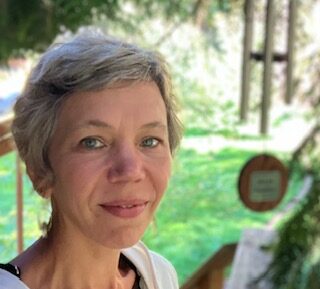
by Guest | Oct 28, 2024 | Being Well, Featured, Uncategorized
…to taking action for breast cancer prevention and healing.
October is breast cancer awareness month. It’s also my birthday month, and I’m happy to say, I’ve come a long way in my healing as I now feel honored to share my birthday month with this awareness as many of us would like to not have to touch it with a 10 foot pole. You see, I’ve learned much about breast cancer from lived experience, both my own diagnosis and one of my sisters. My sister’s story ended with her dying from metastatic breast cancer only 2 years from her original diagnosis. I’m currently 2.5 years out and doing great as I plan to continue to do.
Neither of us were paying enough attention to our risk factors and we had several. There were many factors involved including earlier cancers and radiation treatments, environmental toxin exposures (we all live in a chemical soup world, reducing our exposures and supporting our body’s pathways of elimination are key) emotional and physical overwhelm/high stress, over-nurturing others and under-nurturing the self. Sound familiar anyone? 1 in 8 are the current statistical numbers of breast cancer occurrence among women. Also, did you know? 1 in 100 men are affected. Each story is unique and there are certain things that put each of us in different risk categories.
Knowing our risk factors, how many we have and what we can do to lower our risk factors with lifestyle modification are all within our control. I knew I was in a higher risk category from having had radiation therapy in my early 20’s. I knew I functioned at a high stress level, saw signs of estrogen dominance, was persistently overweight for many years, chronically inflamed and worked nights often as a birth doula plus a few other factors. Yet I just hoped eating organically and not exposing myself to more radiation would keep me healthy. It wasn’t enough. Receiving the diagnosis of invasive ductal carcinoma right after my sister’s passing was a doozy of a hit too, but through my lifestyle adaptions it has ultimately brought me back to my earlier life goal of longevity (living to 100 or beyond!) and living that life in vibrant wellness. Good health has always been a passion of mine, but it’s funny how we can let stress and certain situations lead us to believe we should accept less for ourselves. Ultimately cancer has taught me how to live well again. Thank goodness! However, it was not easy to go through to get myself back on track. I don’t actually recommend it 😉 It is therefore, my pleasure and task to share with others what they can do to ideally avoid diagnosis by steering away from known risk factors and incorporating lifestyle habits that decrease risk factors. I love sharing preventive habits and skills in general for us all (including prevention of other diseases too I’d like to add).
Know your risk factors. How many of these align with you?
Risk factors from CDC
- Being a woman
- Age: most diagnosed after 50
- Having BRCA1&2 genes (genetics can be dimmed or brightened with lifestyle)
- Reproductive history – beginning menstruation before age 12 and menopause after 50 – also – First baby after 30, no breast feeding, no full term pregnancy
- Having dense breast tissue/connective tissue (hard to read in mammograms and needs better lymph movement and movement in general) Ultrasound and thermography** are better at reading dense breast tissue **note that thermography isn’t currently utilized by conventional medicine.
- Having a personal history of breast cancer
- Other breast diseases such as atypical ductal hyperplasia, lobular carcinoma in situ
- Family history of breast or ovarian cancer (with or without BRCA gene) first degree relative; mom, sister, daughter – mother or father side
- Previous treatment with radiation (such as Hodgkins lymphoma also a sign the lymph system needs support)
- Exposure to DES drug – diethylstilbestrol – 1940-1971 – miscarriage prevention (mom and baby at higher risk)
- Not physically active
- Overweight or obesity after menopause
- HRT – hormone replacement therapy and slight increased risk seen from birth control pills.
- Drinking alcohol – risk increases with the more a woman drinks
- Smoking
- Night shift work
I would also add: environmental and food chemical additives that can overload our lymph and endocrine system as well as harm our gut microbiome.
Now to the empowering stuff!
What we can do: Taking action is key!
Eat more whole food plants! Eat more colors, eat seasonally, locally and clean/organic whenever possible. Check out the EWG’s list of clean 15 and dirty dozen to know what produce is ok to buy conventional/clean15 and which are ideal to buy organic/dirty dozen) Visit a local farm and enjoy their produce. They need our business through the cooler seasons too. Add one more vegetable to every meal and one new color a week. Ask about the farm’s growing habits. Find farms that don’t use chemicals. Many practice organic methods but don’t carry the certification yet and they’re happy to answer your inquiries.
Exercise! Move your body in ways that make you happy and feel good. Get moving every day. And this doesn’t mean stressed out running around, no, that’s counter productive. This means, enjoy a walk, hike or bike ride. Prioritize the time to commit to regular movement. You are so worth it! Walk one day, take a movement class another day such as Yoga or Joy Lymph Flow (a class I lead in Rockaway Beach and Nehalem) Tai Chi, Qigong or whatever you fancy, but it should bring ease to your body and time for repose. Turn on the music and dance! A fabulous way to heal many layers and promotes connection and health within the family if you live with others.
Quit smoking and don’t drink alcohol or limit your intake. Mocktails made with herbs are power packed with more phytonutrients that help us stay well and are an actual treat vs. a known risk factor.
Switch to natural household and personal care products. Don’t use anything with “fragrance” listed as an ingredient or chemical names you can’t pronounce or artificial colors. There are so many products out there, it can be overwhelming. Environmental Working Group also has a Skin Deep database listing products that are free from chemicals. It’s not one product that becomes the problem, it’s the many products together, it becomes a toxic load the body can’t handle. Switching to natural cleaners and personal care items actually uplifts our health instead.
Discuss your risk factors with your ND or MD and meet with a health coach like myself for support in making changes to your lifestyle at a pace that works for you to live a life that’s shown to be more preventive in lowering your risk factors and ideally avoiding this disease. I also teach breast massage for self-care and home screening. 3 This article is dedicated to those we’ve loved and let go of too early due to this disease and to those facing it now and in the future. May we all be free, live in flow, know ease and enjoy self care first so we may indeed be well and remain here for others.
Written by Elizabeth Golden Seaver, Health and Wellness Coach, Nehalem, OR and Tillamook County Wellness Coalition Member.
You can reach out to her at: goldenkeywellness.abmp.com, wingforwisdom@gmail.com
Other wellness questions? Email us at info@tillamookcountywellness.org. For more local health and wellness information, visit www.tillamookcountywellness.org or follow Tillamook County Wellness on Facebook and Instagram.
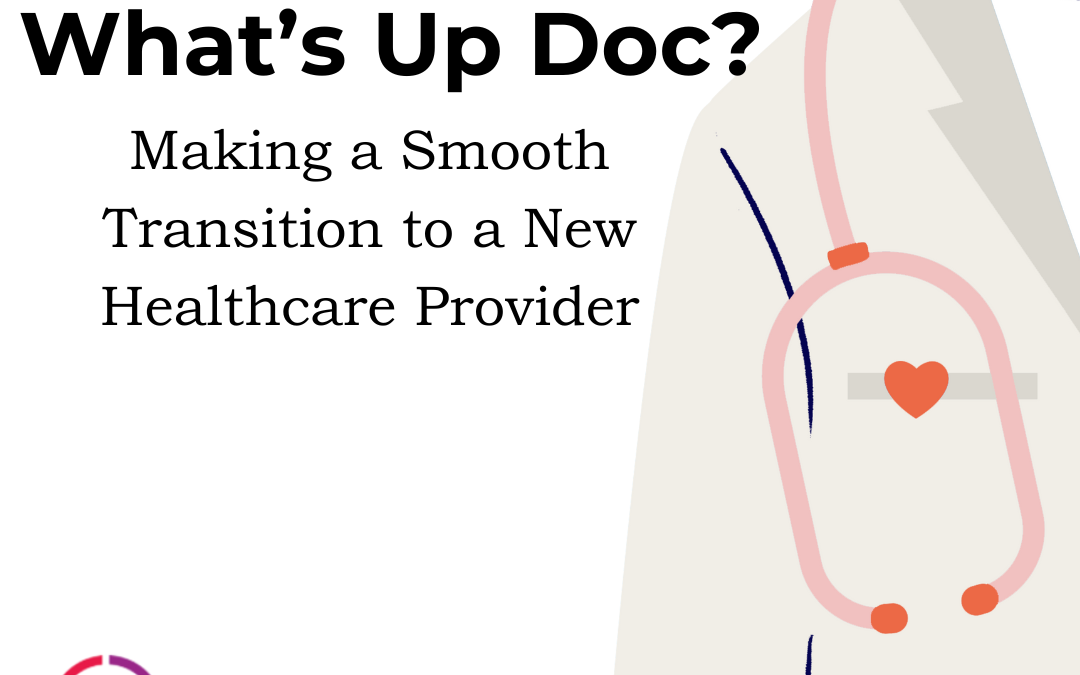
by Guest | May 30, 2024 | Being Well, Featured, Uncategorized, Work Well
When your primary care provider (PCP) retires, you move, or your insurance changes, finding a new healthcare provider can be challenging and anxiety-inducing. You want someone you can trust with, well, you. You want someone knowledgeable and empathetic to your personal needs. After all, this is someone you will see during times of vulnerability. Finding the right fit and fostering a good relationship is a vital part of managing your health. There are steps you can take to find someone you are comfortable with who provides the care you are looking for.
Choosing Your Doctor
Many different things go into why you choose a specific healthcare provider. Determine what is most important to you when selecting someone to see.
Qualifications: A PCP is a healthcare provider who sees people for common medical problems. Traditionally, this was a doctor. In the State of Oregon, medical doctors (MDs), osteopathic doctors (DOs), nurse practitioners (NPs), physician assistants (PAs), and naturopaths (NDs) can all work as primary care providers. Each type of provider has medical training, but the training varies based on their education, which affects how they provide care.
Get to Know Them: Look up their profile on the clinic’s website. This usually includes a photo and a bit of information about the person. Reading online patient reviews may give you a sense of their communication or practice style.
Office Hours and Availability: Finding someone who works when you don’t will make getting your routine care easier. Make sure you know their clinic’s hours, including any weekend or evening availability. Also, when you call to schedule, ask about the specific provider’s availability. Are they booked out months in advance? That is a warning about potential difficulty seeing them when an issue arises.
Insurance Coverage: Some clinics may take your insurance, but your insurance may not cover the one provider you want to see. An example of this is with naturopaths who are not covered by Medicare. It is also important to remember this when your insurance changes. A new insurance may not cover the provider who has managed your care for the last 10 years. Contact your insurance company for a list of covered providers.
Before Your First Appointment
Preparing your first appointment will make the appointment go more smoothly for both you and the new PCP. There are basics any new healthcare provider will need:
Collect information on your medical history:
- Past surgeries, illnesses, chronic health conditions
- Current medications, supplements, and allergy list
- Vaccination record
- Family medical history
Make a list of concerns to talk about with the provider:
- What is most concerning to you that day?
- Keep the list short with at most three items. Appointments are typically only 20-40 minutes. Respect the provider’s time to see their other patients by scheduling a second visit if needed.
- Do you have high blood pressure or diabetes? Write down recent readings to share with the provider.
Making the Most of Your First Visit
Show up prepared to get the visit off to a good start. This will help reduce any anxiety or stress you may have about it.
- Make sure to give yourself enough time for the appointment without needing to rush off to another task.
- Arrive early to fill out paperwork.
- Bring any past medical records or contact information for your previous PCP and specialists.
- Remember that insurance card!
Plan for open communication.
- Be honest about your health. The PCP can’t give you the best care if pieces of your healthcare puzzle are missing.
- Talk about your healthcare goals. Are you worried about a family history of dementia or trying to bring down your blood pressure? Let them know.
- Ask questions to clarify information you don’t understand.
- Request a written summary of the visit for you to review later.
- Know the next steps, such as any follow-up visits or referrals.
Building a Long-Term Relationship
Any good relationship requires effort from both sides.
- Stay in touch with your healthcare provider by scheduling regular well checks.
- Schedule and keep the follow-up visits your provider recommends. These visits are generally to keep an eye on health concerns.
- Keep your PCP updated about any changes to your health, such as new injuries or surgeries.
- If you see a specialist, go to urgent care, or the emergency room, make sure the records of your visit are sent to your PCP.
Finding a PCP can go smoothly with a bit of preparation. One of the fundamental components to developing a good relationship with your healthcare provider is seeing them regularly, not just when you have a problem. This helps the PCP get to know you and your health situation. Open communication will go a long way in building a strong provider-patient relationship, which can help to improve your health outcomes.
AUTHOR: Leanna Coy, FNP-C, Family Nurse Practitioner and Health Content Writer
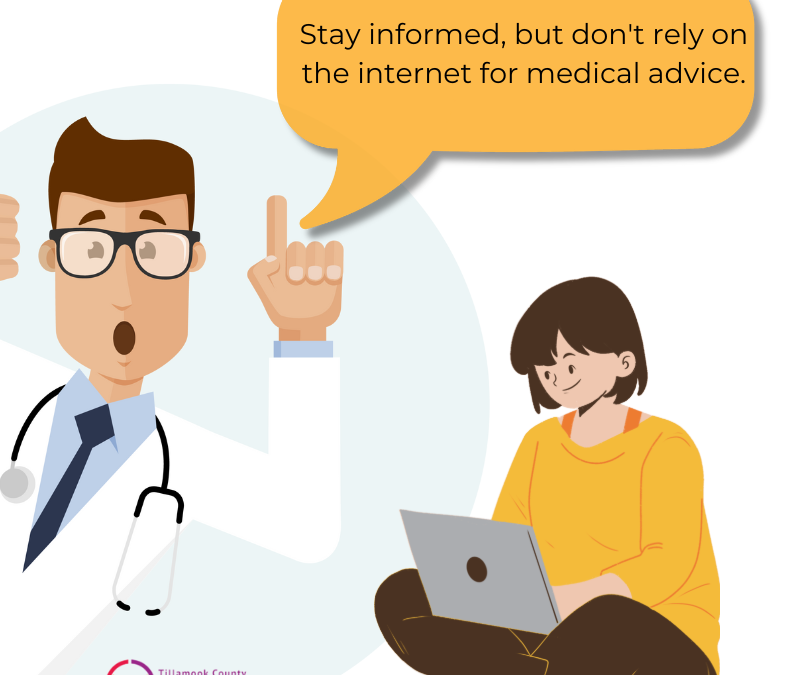
by Guest | May 17, 2024 | Being Well, Featured, Uncategorized
Fortunately, Buzzfeed has never claimed to be able to give you any medical diagnosis. But plenty of other sources on the internet walk the fine line between “this is not medical advice” and “this sure sounds a lot like medical advice”. There’s a quiz for everything, and a “cure” for everything. A problem you didn’t know you had, and the product that can solve it (for three easy payments of $19.95, plus shipping and handling!) Anything and everything to do with your health can be found with a few taps on your phone, so it’s important to recognize how media literacy ties in with health literacy.
Let’s take a step back. About 21% of US adults experience chronic pain, or pain that lasts for three or more months. Millions suffer from conditions that have no known treatment or cure. Our doctors don’t always have the answers we are looking for. After all, they can’t prescribe a treatment that doesn’t exist, or diagnose a condition that they don’t have the evidence for. And so, we strike out on our own determined to find a solution to the pain we carry every day. A solution beyond the scientific boundaries of conventional medical practice. Collectively, these solutions are referred to as alternative medicine.
Alternative medicine has real value to many individuals and cultures. That is not up for debate. For thousands of years, alternative medicine was the only medicine. However, there is potential for significant harm as these practices have expanded from healers utilizing medicinal herbs to Dr. Charlatan on the internet trying to sell you an at-home detox regimen that may very well do more harm than good. Many treatments or devices label themselves as alternative medicine when they are little more than a scam.
Here, health literacy and media literacy collide. Having the ability to recognize what information and products are legitimate and which are deceptive (not to mention potentially harmful and a waste of money) can make a significant difference in your health and quality of life. Let’s go over some questions to ask as you evaluate the validity of medical information online:
- Does it come from a reputable webpage, such as that of a university or hospital
system? Keep in mind that anyone can post deceiving information on social
media, or even on a website of their own. The website URL can give you some
clues. Websites ending in .edu=educational institutions, .gov=government agencies, .org =an organization (often non-profit), .com=commercial, and.net=network. Be particularly wary of .com and .net websites, as they could be hosted by anyone.
- Does it conflict with other reputable sources? If so, consider getting a second (or
third) opinion.
- Does the source profit off of your choice? Are they trying to sell you anything (a
device, a course, a supplement)? If they are promoting a supplement, is it their
own brand that they are trying to sell?
- Is it sensational? Black and white? Health information should be educational, not
headline-grabbing or clickbait.
- Do they have credible sources/citations?
- Is the person or organization making statements credentialed to do so? (Some
titles sound legitimate, but require no training or certification. For example,
anyone can claim to be a “nutritionist”, but “registered dietician” is a protected
title for trained professionals.)
To encourage a safe health practices, consider these tips:
- Avoid long gaps in medical care. Establish with a primary care provider (PCP)
and maintain regular visits. Let them know if anything changes with your health.
- Avoid self-diagnosing. Seek the most accurate diagnosis possible from a trained
physician.
- If you choose to take any supplements, ask your doctor if there is any risk that
they will interfere with your prescription medications. Remember that
supplements are not regulated by the Food and Drug Administration and
sometimes do not contain the product or dosage reflected on the label.
- Don’t change or stop any prescribed medications without consulting your doctor.
- Evaluate how much you are spending on alternative treatments, and whether you
are getting the positive outcomes you are looking for.
What medical treatments or information you choose to follow is ultimately your decision. If alternative medicine provides you with healing and comfort, that’s fantastic! But if you have any questions or concerns about your health, always go to a physician first. Keep up with Tillamook County Wellness’ health literacy campaign to continue learning about how you can play an active role in managing your health. And in the meantime, stick to the TikToks that teach you about gardening, not self-medicating. Be well, Tillamook!
written by Sarah Ermer, MPH, CHES, from Tillamook Family Counseling Center
Resources:
Rikard SM, Strahan AE, Schmit KM, Guy GP Jr.. Chronic Pain Among Adults — United States, 2019–2021. MMWR Morb Mortal Wkly Rep 2023;72:379–385. DOI: http://dx.doi.org/10.15585/mmwr.mm7215a1.
U.S. Department of Health and Human Services. (2024, February 13). Is this legit? accessing valid and reliable health information. National Institutes of Health.
https://nida.nih.gov/research-topics/parents-educators/lesson-plans/legit-accessing-valid-and-reliable-health-information
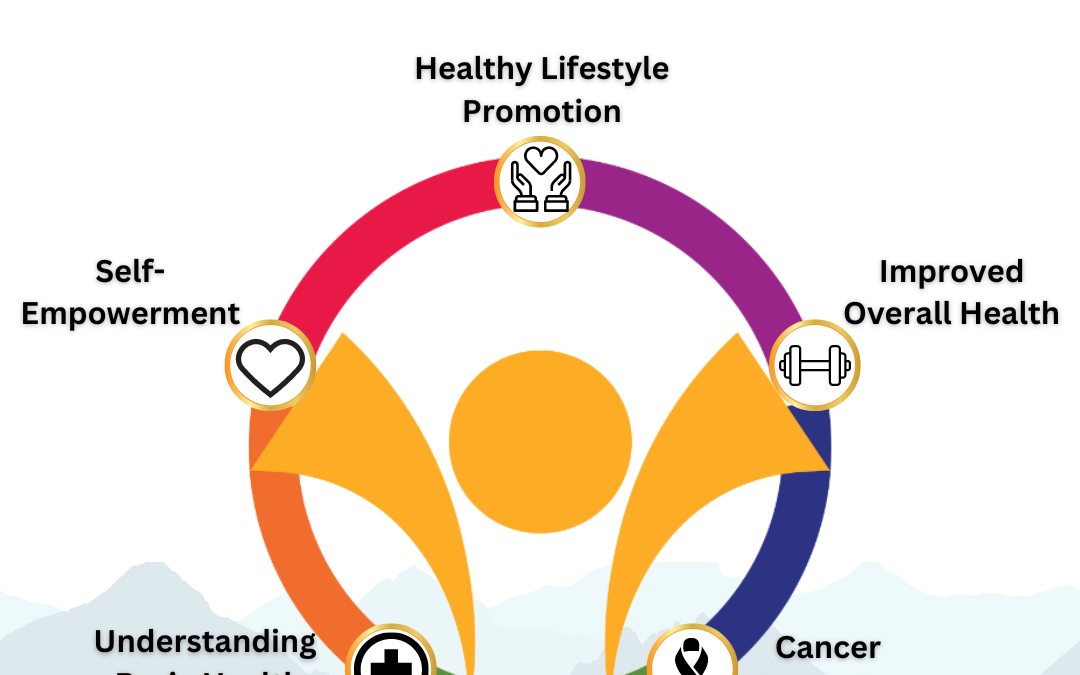
by Guest | May 2, 2024 | Being Well, Featured, Uncategorized
Navigating healthcare can be confusing, and knowing when and where to seek medical attention can feel like solving a complex puzzle. There are different types of medical care, including primary care, urgent care, emergency care, and online doctor visits, and each serves a specific purpose. Having a clear understanding of the differences between them is vital for maintaining your health effectively.
Primary care is your first point of contact for managing your overall health. Your primary care provider (PCP) can help with routine check-ups, preventive care, and treatment of common illnesses. Establishing a relationship with a PCP is important because they get to know your medical history and can provide personalized care and guidance. You should visit your PCP for regular screenings, vaccinations, management of chronic conditions (like diabetes or hypertension), non-emergency illnesses (like colds or infections), and general health concerns.
Urgent care centers are equipped to handle non-life-threatening medical issues that require prompt attention but are not severe enough for an emergency room visit. They offer extended hours and typically treat conditions like minor injuries, infections, and illnesses that need immediate care but are not critical. You should choose urgent care for conditions like sprains, minor burns, fever, vomiting, stitches, or other urgent but not life-threatening issues, especially when your PCP is not available.
Emergency rooms are designed to handle critical or life-threatening situations. If experiencing chest pain, difficulty breathing, sudden weakness or numbness, severe burns, or major trauma, head straight to the ER or call 9-1-1. Don’t hesitate. Use emergency care for serious injuries (broken bones, severe cuts), severe illnesses, heart attacks, strokes, or any condition that could be life-threatening.
Telemedicine or virtual visits with doctors provide a convenient way to consult healthcare professionals remotely. This option is suitable for non-emergency issues when an in-person visit is not necessary. You should consider online visits for minor illnesses (like sinus infections, rashes), medication refills, follow-up consultations, or initial assessments of symptoms.
Health literacy is a crucial skill that empowers individuals to take charge of their well-being and navigate the healthcare system effectively. Having a primary care provider is essential for several reasons, including continuity of care, preventive care, health advocacy, and chronic disease management. Your PCP manages your long-term health needs and coordinates care across specialists, ensuring holistic and personalized treatment.
When visiting a healthcare provider, whether it’s a PCP, urgent care, or online doctor, expect a comprehensive evaluation, a physical examination, diagnostic tests, and a treatment plan. Remember to communicate openly with your healthcare provider, ask questions, and voice any concerns you have about your health. Your active involvement in your healthcare journey can lead to better outcomes and improved overall well-being.
Understanding the nuances of when and where to seek medical care empowers individuals to make informed decisions about their health. By embracing health literacy and establishing a relationship with a primary care provider, individuals can navigate the complexities of healthcare with confidence, ensuring timely access to appropriate care when needed.
To learn more about Medical Services or to find a Primary Care Provider, please visit: https://adventisthealth.org/tillamook/doctors/
https://tillamookchc.org/medical-services/
https://www.nehalembayhealth.org/
Resources:
“Primary, Urgent, Emergency Care and Online Doctor Visits – What’s the Difference?” UnityPoint Health, www.unitypoint.org/news-and-articles/primary-urgent–emergency-care-whats-the-difference. Accessed 29 Apr. 2024.
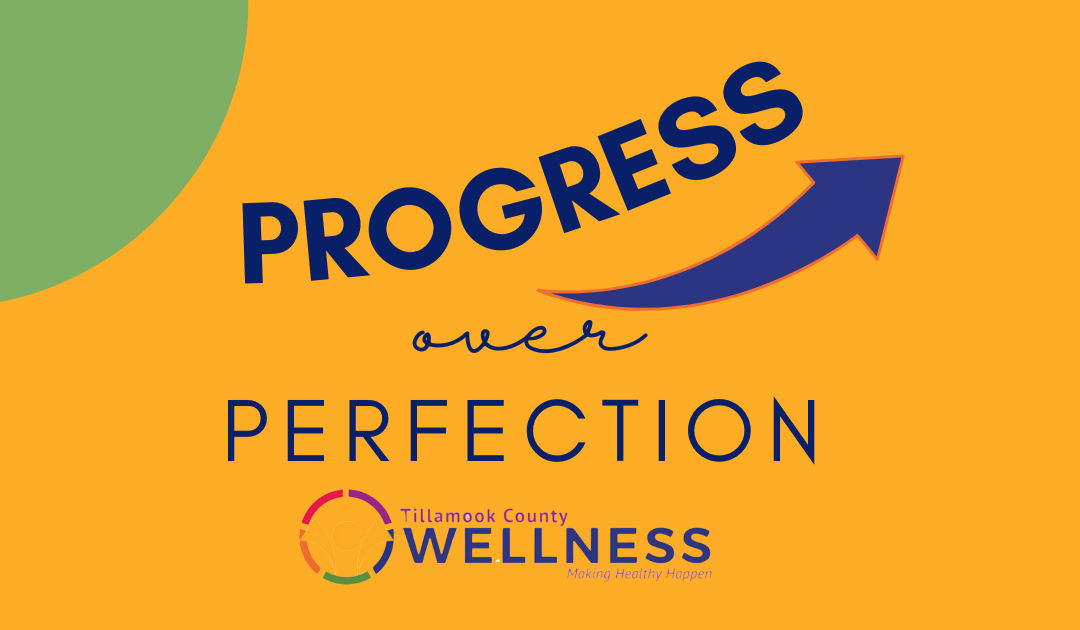
by Guest | Feb 12, 2024 | Being Well, Featured, Uncategorized, Work Well
By Guest Author: Emery Edwards
I’m a perfectionist. I always have been, and I probably always will be in some capacity. So, my health improvement journey has been a struggle. Somewhere in the 21 years before I started trying to change my life, I had gotten this idea that if I couldn’t do it perfectly the first time, I couldn’t do it at all. I’m sure some of you have felt similarly, especially when it comes to your health. There have been countless times where I’d stuck to my goals for a week or two, but I am inevitably confronted with a birthday party, a night out, or anything that might challenge your newly formed habits. I’ve always felt it’s a zero-sum game- I default on my healthy habits one time, and my progress is null, and I might as well give up. Many of us who have embarked on the journey of improving holistic health have experienced this, and it’s okay. What will be more damaging than one day, one week, or one month of falling back, is if you believe that the progress you’ve made up until that point means nothing because you weren’t perfect.
This is where progress over perfection comes in. Recognizing that you are making progress, but you’re not perfect, is the way I’ve been able to transform my habits over the last 6 months. Instead of chastising myself for not exercising one day or eating something that does not serve my body, I recognize that overcoming these habits is a longer journey than I had been led to believe. Crash diets, unrealistic societal expectations, ‘lose weight quick’ schemes, and the like have warped my thoughts about health for a decade, and I know I’m not alone in this. If it has been instilled in you for so long, it will inevitably take more than a couple months to fully change your mindset. Giving yourself grace in this journey of feeling better is more important than absolute perfection. But you must want to feel better to make these changes sustainable.
It takes dedication to make that progress and change your lifestyle. I started with upping my fiber and protein intake through whole foods and reduced the simple carbohydrates and sugars in my diet. It took me mere weeks to feel more present in my body, have more energy, and improve my sleep quality. It took me months, however, to make these practices a daily habit. Instead of giving up when I gave in to the residual cravings, I would wake up the next day and continue with the goals I had been working towards. My world does not stop when I eat a chicken strip, and I promise that yours doesn’t either. Maybe pair that chicken strip with some roasted vegetables like brussels sprouts, broccoli, or a simple garden salad to make it more nutritious. It’s all about adding what you need to satisfy the craving in a healthier way, and after you eat it, move on to meeting your goals. The name of the game is progress, not perfection. But when I tell you, I went from needing a nap in the middle of the day to function to having the energy to take me through the entire day without a yawn, I am telling you the truth.
I am only 6 months into my progress over perfection journey, so I’m no expert. But what I will say is I have never in my life felt as good as I do today, and every day gets even better. I started with my eating because I had no energy to introduce exercise into my routine, now I have too much energy to sleep if I don’t exercise. It’s a beautiful problem to have. I would not have gotten this far if I had given up the first time that I ate something I told myself I wouldn’t. Which probably happened within a week of starting the journey if I’m honest. The name of this game is grace- give it to yourself, to others, and remember that it’s all about your overall progress, not being perfect.
For more local health and wellness information, visit www.tillamookcountywellness.org or follow Tillamook County Wellness on Facebook and Instagram.





